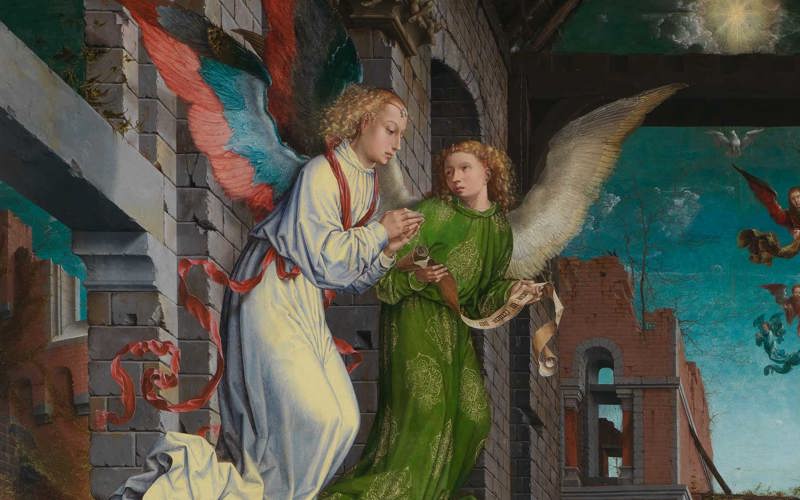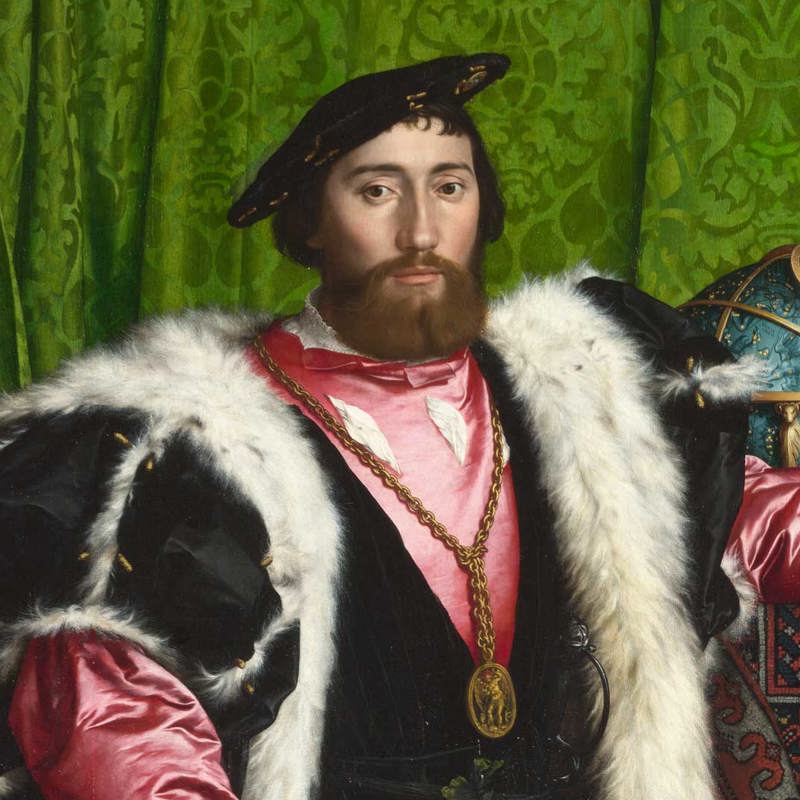City by city: Renaissance art north of the Alps
- Past - Tuesday, 9 September 2025
- Past - Tuesday, 16 September 2025
- Past - Tuesday, 23 September 2025
- Past - Tuesday, 30 September 2025
- Tuesday, 7 October 2025
- Tuesday, 14 October 2025
Tickets
| Standard: | £90 |
| Concessions: | £85.50 |
Please book a ticket to access the event. You will receive an E-ticket with instructions on how to access your online events, films and resources via your National Gallery account.
Please note, only one ticket can be booked per account.
Concessions are for full-time students, jobseekers, and disabled adults.
About
On this six-week course, explore the Renaissance north of the Alps and how ideas flowed between cities and courts, bringing scientific, literary and artistic change.
Our story moves from the hyper-rich realism of Van Eyck to the versatility of Dürer, and from Holbein’s portrayal of the Tudor court of Henry VIII to the Antwerp of Bruegel – a city of soaring wealth and iconoclasm, teetering on the edge of rebellion and war.
In France, Germany and England, the rivalry between kings, dukes and the Holy Roman Emperor was played out across the continent. The emperor controlled not only vast lands to the east of Europe, but also Spain, the Low Countries and – through the 16th century – the New World as well. This power-play affected most of the known world, and art, architecture and design, as well as innovations in politics and religion, were important weapons in this struggle.
The Reformation profoundly changed Northern Europe, and we will see how radical ideas about the individual’s relationship to God circulated through art and writing, thanks to new printing technologies.
Meanwhile, cities such as Bruges and Nuremberg also saw booming international commerce that likewise prompted changes to art and design.
In the late 1300s and in early 1400, Paris was the major artistic centre north of the Alps, renowned for its exquisite, illuminated manuscripts and skilled goldsmiths and sculptors working for the royal court.
As Paris’s glory faded, cities like Dijon became the focus of royal patronage. Not until the early 1500s, with the accession of Francis I, did Paris regain its prominence and royal patronage. The king’s rebuilding allowed the glory of French Renaissance architecture to shine, with Italian artists creating new forms of decoration for the Louvre, Fontainebleau and the châteaux of the Loire Valley.
By the early 1400s, Bruges had become a key trading centre. Under the Dukes of Burgundy, the town became a centre for international merchants, especially in the wool and cloth trades, bringing fantastic wealth to the area and making it a significant power block.
Bustling with high-status merchants and courtly diplomats, Bruges provided a ready market for the works of artists such as Jan van Eyck, Rogier van der Weyden and Hans Memling.

By the 1400s, the many small principalities, cities and states that made up the Holy Roman Empire had become a fiefdom of the Habsburg dynasty, and a huge court moved from city to city as the Emperor and his regents tried to govern this pan-European state.
Portraits of the Imperial family promoted cohesion but art collecting also became a passion with works by Dürer, Gossaert and Bosch entering royal collections. In this session, we focus on the career and collection of Emperor Maxmilian I, whose world included the riches of Burgundy and the Tirolean stronghold of Innsbruck, as well that of his daughter Margaret, regent of the Low Countries and his grandson, Charles V, who inherited the throne of Spain.
From the early 14th century Nuremberg was a Free Imperial City (subject only to the authority of the emperor), strategically situated on the major trade routes between Italy and Germany. Famous for its goldsmiths, arms and armour-makers and its strong literary culture, it was the birthplace and home of Albrecht Dürer, the most important painter, printmaker and artistic theorist of the German Renaissance.
Dürer’s reputation as a printmaker spread across Europe, and he also travelled widely, relishing the new artistic ideas he found in Italy and the Low Countries and helping astronomers and cartographers in their attempts to map the world. His incisive portraits and delicate landscapes are evidence of his remarkable observational skill – offering us a vibrant picture of the changing world he inhabited.
England, in the 1400s, was riven by war – a century long conflict with France, followed by the Wars of the Roses. There had been little time or money to lavish on art or culture, but the new Tudor king, Henry VII understood the power of the latest ideas about art, design, religion and politics, flowing into England via the Hanseatic League, a trade network linking ports such as Gdansk, Stockholm, Lubeck and Novgorod with commercial hubs like Bruges, Cologne and London.
Under the Tudor dynasty the royal image became of paramount importance. In this session, we find ourselves in the presence of King Henry VIII and his Tudor court, thanks to the extraordinary portraits and drawings of Holbein the Younger.
Towards the end of the 15th century, Antwerp surpassed Bruges as the new boom town, with merchants raising eye-watering amounts of money to finance the wars, projects and daily outgoings of the Holy Roman Emperor and the Spanish rulers of the region.
Antwerp was also where the art market, as we know it today, began to develop, with dealers bringing together artists with prospective patrons. As commerce grew, artists such as Bruegel and Bosch satirised the society around them, but new religious ideas caused devastating conflict and friction with the Spanish overlords of the Low Countries.
Your tutor
Jo Walton has lectured for The Arts Society for over 15 years, specialising in the art and architecture of the Italian Renaissance, as well as aspects of British 20th-century painting and sculpture. She has also worked extensively with The Art Fund, The Friends of Dulwich Picture Gallery and local art groups around the UK and was a volunteer guide at Tate Britain and Tate Modern for over a decade.
Watch again
Can't make Tuesday afternoons but don't want to miss out? No problem, you can watch again.
Each session is recorded and made available to you for the duration of the course, up until 2 weeks after the final session.
A video of the week's lecture will be uploaded and available for you to watch via your National Gallery account on Thursday afternoons, in time for the weekend.
Format
Each session lasts for 2 hours and includes a lecture delivered by the course lecturer followed by a short break and further discussion.
Time will be allowed for questions and discussion via Q&A.
Handouts will be available via your National Gallery account on Monday mornings.
Optional homework is provided to help you prepare for the following week's session.
Booking information
This is an online ticketed course hosted on Zoom. Please book a ticket to access the course. Only one ticket can be booked per account.
You will be emailed an E-ticket with instructions on how to access the course via your National Gallery account. All course information including your Zoom link, weekly handouts, and recordings will be available here.
Your link will be valid for the duration of the course.
Booking after the course has started
You are welcome to join the module at any point during its six-week run. You will gain access to all the recordings until two weeks after the final session.






